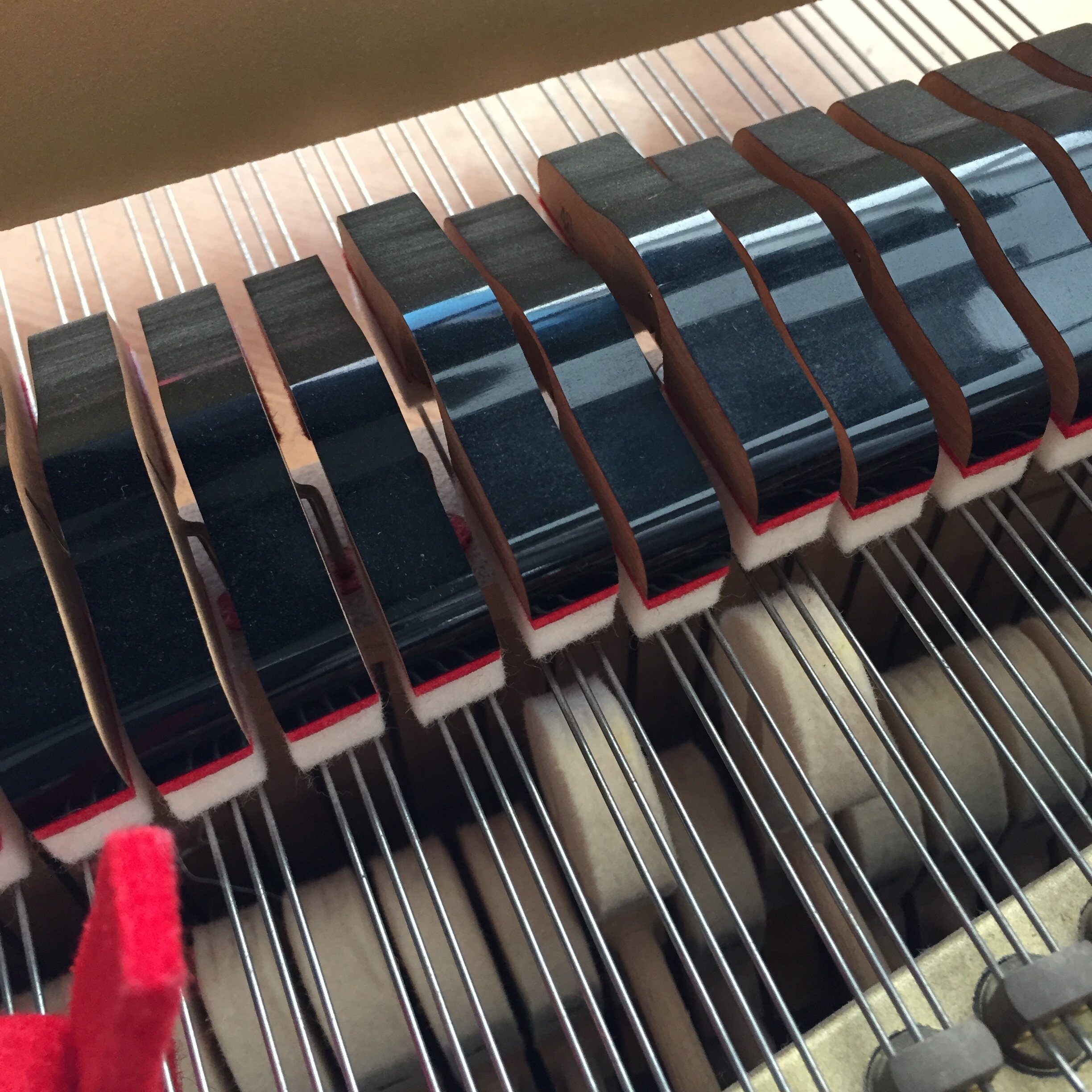Regulation: It's All Connected... Everything.
My first appointment today was with a Yamaha GH1B. That automatically dates it to at least 10. years old or more. This one was 25. Other than a pitch raise and a tuning I could tell from playing a few notes that it needed more. The client is a friend so I took the liberty.
In a previous post I talked about doing as much as you can in the time you have. In this case I was already looking at a double tuning. So a let's get a handle on the situation. I usually take about 30 seconds to cycle through the regualtion just taking a quick glance at each step. In a few moments you should be able to look at the state of the hammer line height, the repetition spring tension, the let-off and drop, damper lift, and damper upstop (That last one is really common. The upstop rail is inside the action cavity and sits just above the damper levers to limit their travel).
All of the above things considered, this piano needed three things: the hammer line was too low and needed to be raised, the key frame needed to be bedded, and the damper upstop rail was up too high allowing the damper levers to bounce on the key ends. The reason I title this post "It's All Connected" is because the way I came to those particular three things.
The Hammer Line
The biggest issue I found was the hammer line being way too low. When hammer line is allowed to sink so low over time the affect on the touch is three fold. There is a loss of aftertouch (a longer hammer travel leaves little dip left over for any aftertouch after let-off/drop), the backchecks will rub on the hammer tails during a keystroke (unless they are moved causing a need for re-regulation later when the hammer line is raised), and more importantly the initial inertia of the key movement is increased (because the "at rest" angle of the hammer shank is wider in relation to the strings causing the wippen to have less leverage on the knuckle/hammer shank).The Key FrameThe next issue is bedding the key frame. This is an area where you just have to know your makes and models. The Yamaha key frame (among other brands) is made to flex. There is a large amount of upward movement you can get on the balance rail before the front rail raises. This is by design. Since the amount of key dip is fixed by the front rail punchings this design allows you to use the studs to raise and lower the front end of the keys and action stack should you run into a situation where you needed more or less key dip / aftertouch.
The Damper Up-Stop Rail
The damper up-stop rail is much like the key up-stop rail. You only notice it when it's not where it should be. When the damper lever up-stop rail is too high the damper lever is launched off of the key end and lands back on it with a thud. Pianists of any caliber can feel that. There should only be a small amount of play between the damper lever and the up-stop rail when either the sustain is depressed or a black key is played.Now, let's put it in sequence so the connections can become clear.Raising the hammer line would increase the feeling of aftertouch because the hammer approaches the string sooner in the key stroke. Re-bedding the key frame allows me to compensate for the additional aftertouch. But, by re-bedding the key frame (in this case lowering the keys) the keys are farther away from the under side of the damper lever affecting the damper lift. This put the damper lift at about halfway through the key stroke which is acceptable. In consequence though, the damper levers now are no longer raised as high affecting the placement of the up-stop rail.
Had I started with adjusting the rail I would've need to do it again. Had I started with the hammer line before the bedding the keyframe I would've needed to readjust it again. Had I only adjusted the hammer line I would've had too much aftertouch and the potential for blocking.
This interconnectedness is how you should look at what to do and what not to do based on the amount of time you have. This "selective" regulation cost me about 25 minutes. Any other single item in a typical regulation sequence would be 25 minutes on its own. This is maximum results, minimum time. These three adjustments in concert with each other gave the piano the key touch it needed. The initial key inertia was lessened (hammer line), the aftertouch is appropriate (hammer line / key bedding), the keys and frame are properly connected to the belly giving a solid key feel and better tone (keyframe bedding), and the bouncing feel on the key has been removed (damper up-stop rail). That's a win-win-win.
Feel free to mention more interconnectedness in the comments.

